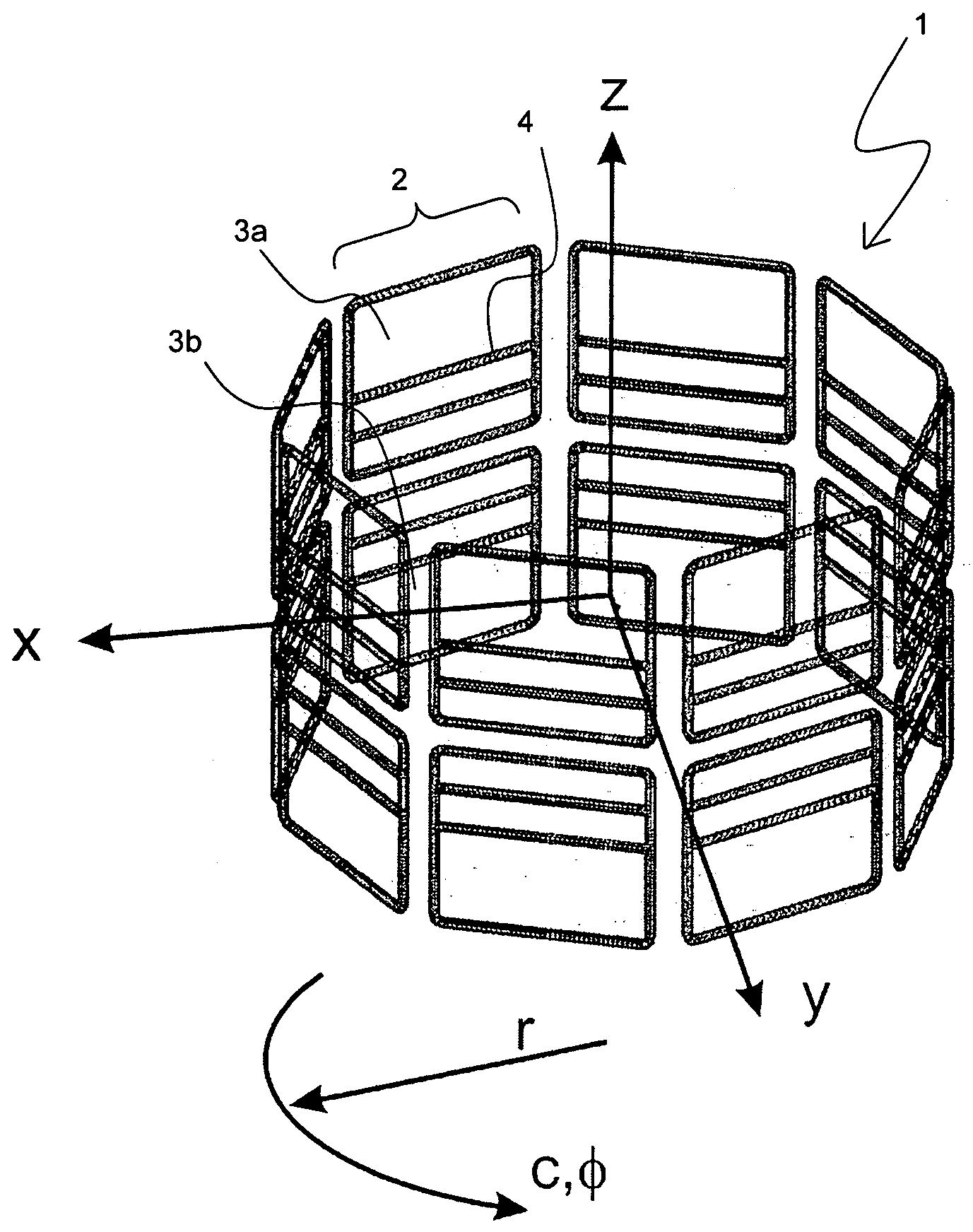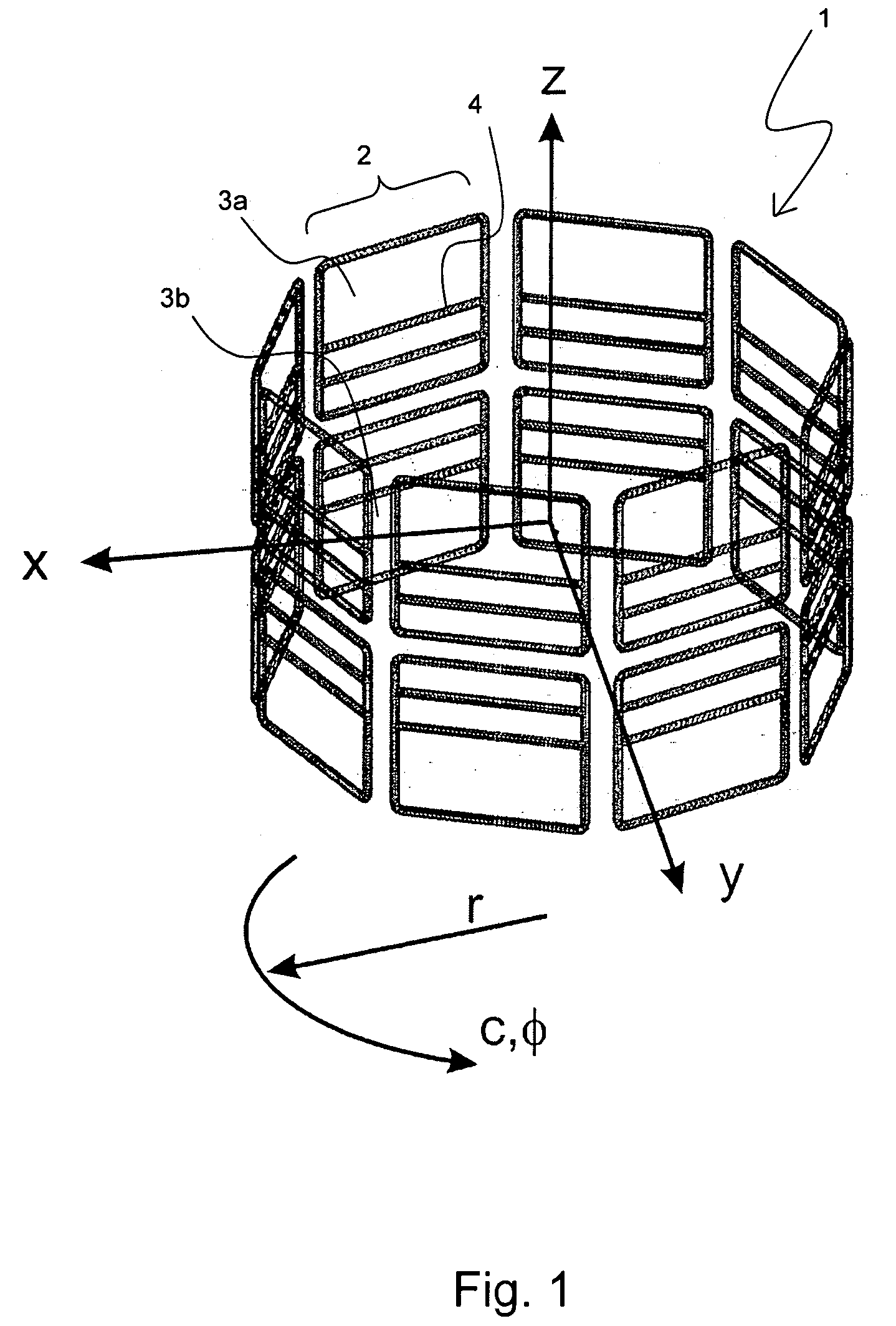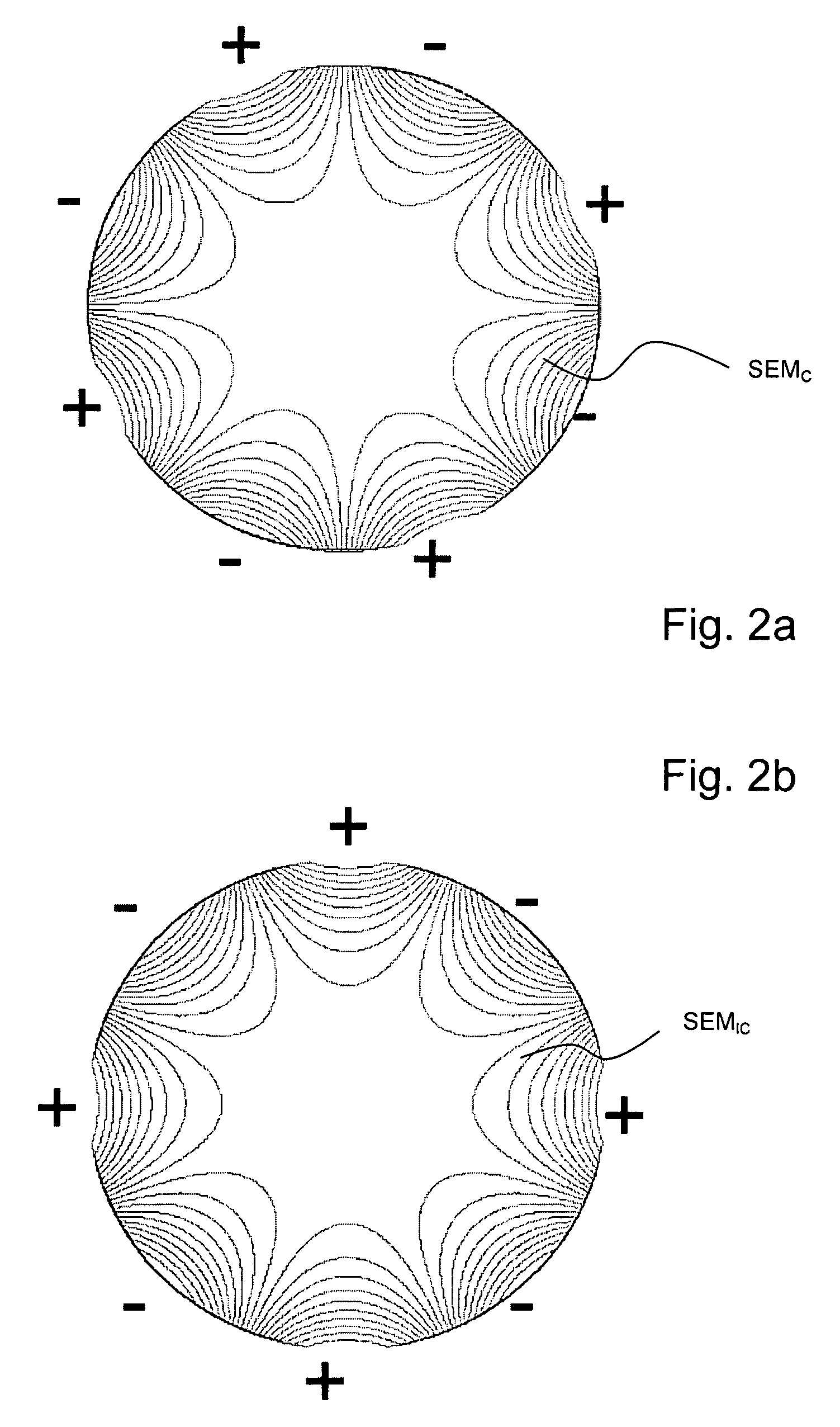NMR tomography method based on NBSEM with 2D spatial encoding by two mutually rotated multipole gradient fields
- Summary
- Abstract
- Description
- Claims
- Application Information
AI Technical Summary
Benefits of technology
Problems solved by technology
Method used
Image
Examples
Embodiment Construction
[0041]The present invention relates to a refinement of NMR tomography methods or arrangements which have become known under the term “PatLoc” from DE 10 2005 051 021 A1, and in particular to the use of multipole encoding fields in pseudo-Bessel arrangement.
[0042]The present invention utilizes ambivalent / non-bijective spatially encoding magnetic fields (=NBSEMs) for the measurement of samples (objects being investigated, measurement objects) in a region to be imaged. Unambiguously encoding magnetic fields are in each case only present in sub-regions of the region to be imaged; the sub-regions are typically delimited from one another by local extremes of the magnetic field or hyper areas which are defined by these local extremes. In order to enable the assignment of measurement signals to locations in various sub-regions, measurement coils which are sensitive in a spatially selective manner are employed, and parallel reconstruction methods then enable a complete tomogram to be obtaine...
PUM
 Login to View More
Login to View More Abstract
Description
Claims
Application Information
 Login to View More
Login to View More - R&D
- Intellectual Property
- Life Sciences
- Materials
- Tech Scout
- Unparalleled Data Quality
- Higher Quality Content
- 60% Fewer Hallucinations
Browse by: Latest US Patents, China's latest patents, Technical Efficacy Thesaurus, Application Domain, Technology Topic, Popular Technical Reports.
© 2025 PatSnap. All rights reserved.Legal|Privacy policy|Modern Slavery Act Transparency Statement|Sitemap|About US| Contact US: help@patsnap.com



